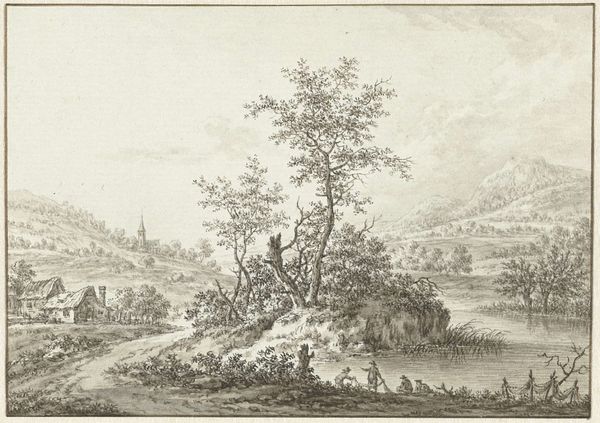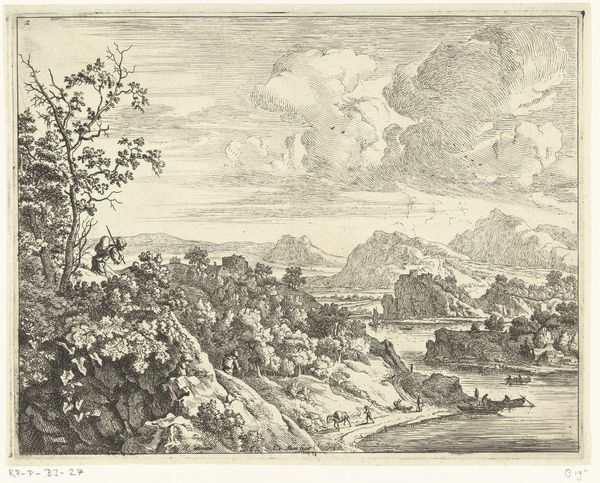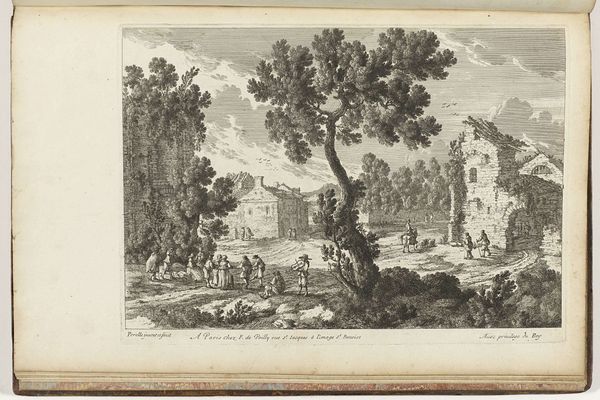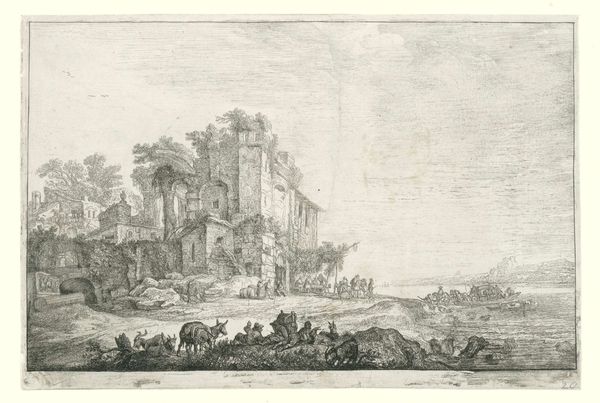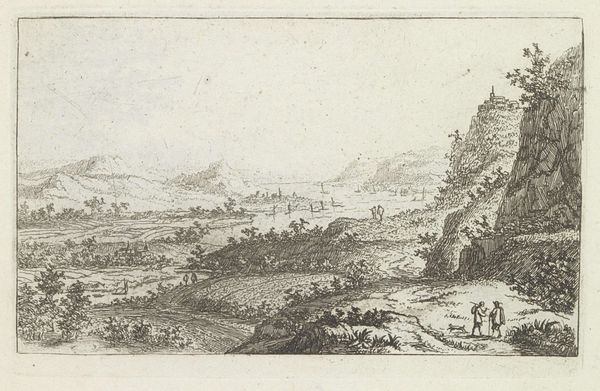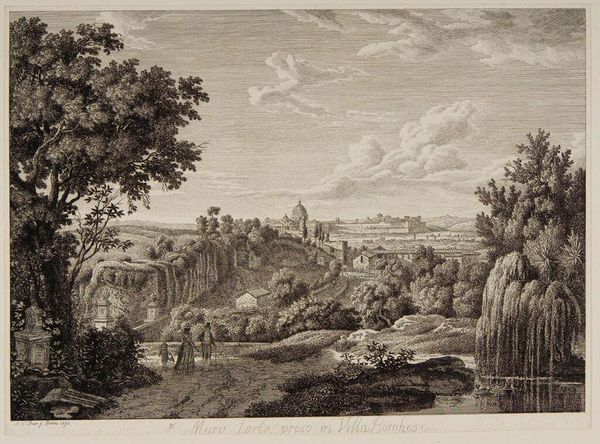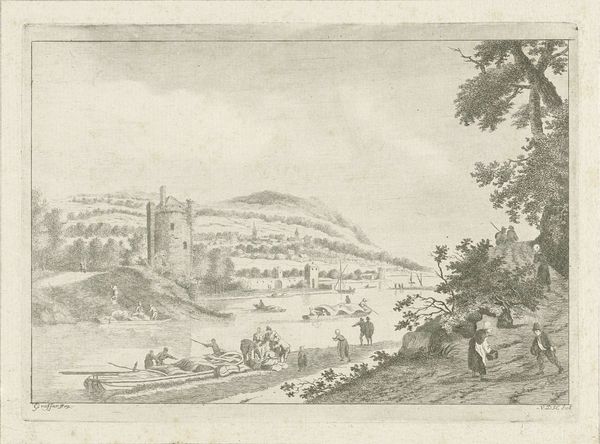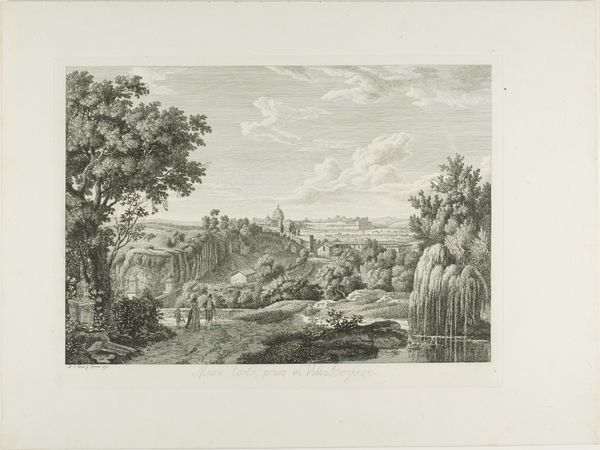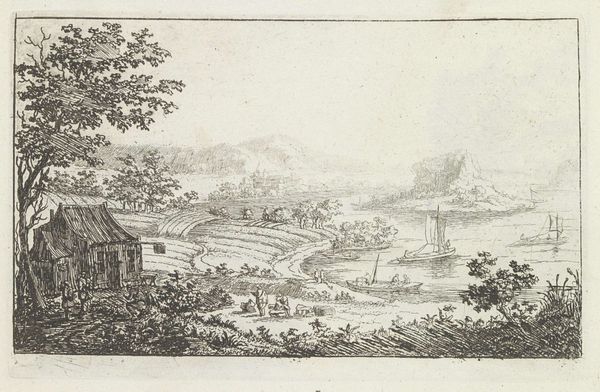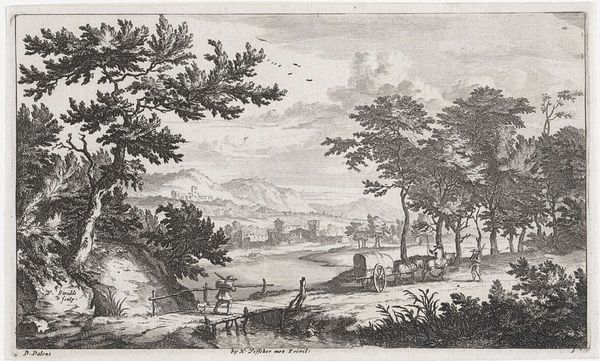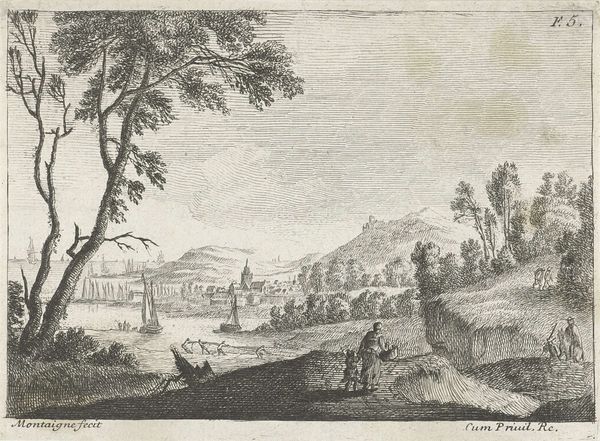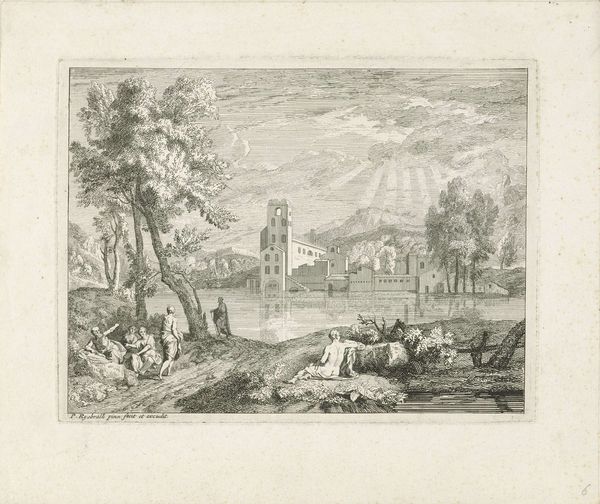
Dimensions: height 239 mm, width 262 mm
Copyright: Rijks Museum: Open Domain
Curator: Let’s examine “Cattle in a Mountainous Landscape” created in 1772 by Anthonij van der Haer. It’s an engraving rendered in a baroque style. Editor: The overwhelming feeling I get is of pastoral serenity. The eye is drawn along the gentle curves of the land and water, and the subdued monochrome contributes to the calmness. Curator: Indeed. This print encapsulates the prevalent societal ideals of the 18th century: an ordered and idyllic vision of nature reflecting Enlightenment values of rational control and land ownership. The shepherd is not merely tending to animals but signifies humanity’s dominance over the natural world. Editor: The contrast of textures fascinates me: the roughness of the foliage against the smoothness of the water's surface, achieved solely through careful cross-hatching. How can so few tonal variations produce such depth? Curator: We can contextualize this landscape within the socio-economic transformations of the period. Agricultural improvements and expanding markets drove the visual interest in idealized rural life, even as the rural poor often experienced hardship. Editor: True, there’s also a tension. The baroque extravagance of the architecture on the hill hints at hierarchies and wealth juxtaposed with the commonality of the figures crossing the river. There's this implicit dialectic happening with architectural aspiration against modest agrarian reality. Curator: Exactly. This artwork highlights how class and societal power dynamics found representation within artistic mediums during that era. Editor: Focusing on the line work, van der Haer manipulates perspective masterfully, compressing space while creating visual movement. The small figures contribute a sense of scale. Curator: Studying such works helps us consider how nature served not merely as backdrop but as an active participant in the social narratives constructed through art. Editor: Thinking of the balance between form and representation here really shifts our perspective. There are a surprising number of contradictions and questions evoked from a seemingly simple vista.
Comments
No comments
Be the first to comment and join the conversation on the ultimate creative platform.
